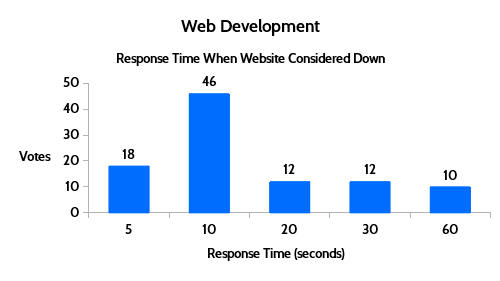
Is this website down
Site is not working
When you open a web page in your browser and it doesn’t load properly, the big question arises: Is it a problem of my connection or the server of that website is down? It is not easy to find out from your smartphone, tablet or computer. Nor testing from several devices at the same time.
We have also previously seen several pages dedicated to check if a website is fine. Below we expand this list with more options, all of them free, easy to use and without registration.
Is my website working and is it online everywhere? Website Availability Test allows you to check the status of a website from any random location or from specific geographic locations, such as Europe, North America, Asia, Australia, South America or the Middle East.
Thus, instead of performing a generic check, we can check if a website works well from any corner of the world, which is important if our site has users or customers from different countries and we do not want to have problems in specific regions.
Downdetector
One of the most alarming situations that can occur to us as administrators of a website is to enter our page and see that it is down. What has happened? Why is my website not working? Could it be the server? And if the server is down, what to do? How to know if a server is down?
There are several reasons why a web can stop working, however, most of them are associated with problems with the operation of the server, either because it is down or because there is a failure in its network power supply.
Since there are many customers who ask us why the web is down and how to know if a server is down, in Einatec we have decided to write this article. We are going to explain what to do when your website is down and how to know if it is the connection or the server that is down. Let’s go there!
Generally, the most common problems are that the server is down or its network lines have failed, which may be because you have hosted your website on an unreliable provider or on a shared server. If this is your case, you can always try to find out why your web server is down.
Pages down
When you share a hosting, the web page runs the risk of being down, because you can control what you do yourself, but not with whom you share that hosting. By sharing the hosting, you share the server capacity with the rest of the hosted clients.
A website that does not have the necessary caching systems installed, generates unnecessary content downloads that can overload the servers. Caching systems prevent content from being downloaded again if it has already been downloaded once and has not been modified since then.
These problems can range from hardware failures, such as hard disk or power supply failure, overloading or overheating, software failure, such as database crash, or internet connection failure, to fire, flood, landslide, earthquake, etc. An accident can cause destruction or unforeseen power outages on the servers of a web site. They can be accidents of chance or nature, but they can also be due to human error. If the website company in question does not have a backup of the data, this server crash can be very serious.
Is it down or just me
While it can be annoying to have a website you want to visit, it happens. Between network connection problems and hardware failures, even the best developed and supported websites can experience outages. Here are some steps you can take to verify if a website is really down.
If you think your Internet connection is OK, you can check to see if the website you are looking for works on another device, such as a different phone or computer. You can also try it on a different browser. Although rare, some sites do not work in some browsers or on certain devices. If you find that the site works on a different device, it most likely does!
There are several websites that can provide information about a specific site. These monitoring sites check to see if a site is down by trying to access it and running some tests on it. You can then view a report on the possible performance of the site, as well as a history on the site: this includes how often it was interrupted or how long it took to respond to a request.
